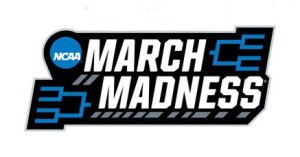By: South Carolina State Treasurer Curtis Loftis, Administrator of Future Scholar College Savings Plan
March 13, 2018
March Madness is upon us! Have you filled out your bracket with top picks for the NCAA basketball tournaments? While many basketball fans across the country are making their predictions of which lucky school will be crowned the 2018 champion, high school seniors are facing an even heavier feat—constructing their own “bracket” of colleges that they could call home next fall. For those seniors and their families, getting ready for college is the real “March Madness.”
One way to calm the madness is to plan ahead to pay for the cost of college. A 529 college savings plan is the best way to save for future higher education expenses. Opening an account early and making contributions as often as possible will give you the best opportunity to achieve your savings goals.
Unfortunately, misconceptions about 529 savings plans often deter parents from getting a head start on saving, so we’ve set out to shed light on some common myths:
Myth: If you haven’t set up a 529 savings plan for your child before he or she starts high school, it’s too late to start saving.
Fact: It’s NEVER too late to begin saving with a 529 plan. Setting up a 529 plan, even late in the game, means your earnings will grow free of federal tax, and you also won’t owe federal tax when you withdraw your funds – as long as you use them for qualified higher education expenses.
- Additionally, there is no age limit on using funds from your 529 account. Whether beneficiaries are 10, 20 or 50—accounts can be used for higher education. In fact, a 529 account can be a particularly useful tool for older adults seeking to finish their degree or go back to school.
Myth: If your child receives a scholarship, you lose your 529 college savings plan funds.
Fact: If your child receives a scholarship, you have options for how you’d like to use your funds.
- You may withdraw the funds.
- When you take a non-qualified withdrawal from a 529 plan, you will incur income tax and a 10% penalty on the earnings portion of the withdrawal only. The principal portion will never be taxed or penalized.
- But there’s an exception to the 10% penalty if the beneficiary earns a scholarship, as well as several other special circumstances.
- You may decide to use your funds on non-scholarship expenses such as room and board, books, and supplies.
- You may use 529 funds to pay for other educational opportunities for your child, such as graduate school.
- You may assign your savings to another family member, such as a sibling or your future grandchild.
Myth: My child will only be able to choose from in-state schools.
Fact: 529 funds can be used in all 50 states at two- and four-year public and private colleges, in graduate and professional programs, vocational and trade schools, and at many international schools.
- It’s always important to do your research to determine the best college or university to fit your individual needs. When choosing a school, it’s a good idea to investigate additional financial aid options schools are willing to provide. For example, you may find your private school financial aid package is comparable to in-state college tuition.
Now that you know the facts, consider the benefits of setting up a 529 plan this March. After all, you’ll be backing your favorite team: your child’s.
Visit CSPN’s FAQ page for any questions you have about saving for college with a 529 plan.
About the author: Curtis Loftis is the State Treasurer of South Carolina. He also serves as the administrator of South Carolina’s Future Scholar 529 college savings program. Visit treasurer.sc.gov or futurescholar.com for more information on ways to save through a 529 plan.
